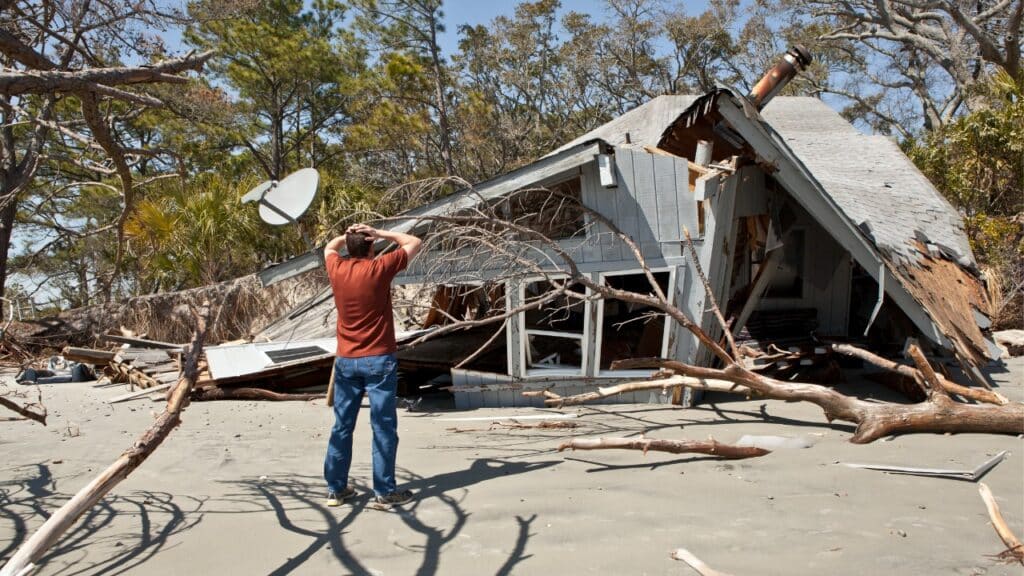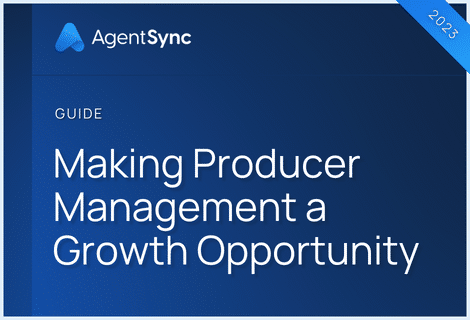

The National Association of Insurance Commissioners (NAIC) Climate Risk & Resiliency Task Force released a new Climate Risk Disclosure Survey in April 2022 as major regulatory bodies move into closer alignment on climate change policies.
While only 14 states plus the District of Columbia have adopted the Climate Risk Disclosure Survey – up from only six states a few years ago – the new standards echo well beyond the borders of those states.
Like all state-by-state regulatory matters, a state legislature or department of insurance must move to adopt a model regulation from the NAIC for that regulation to go into effect. In the 15 jurisdictions that have adopted the Climate Risk Disclosure Survey, all insurance carriers that meet the minimum criteria – currently, those that sell $100 million in annual premium – must complete the survey.
If you’re wondering why the climate survey change is a big deal, why it matters, or what it even is, you’ve come to the right place. Of course, you’re responsible for your own due diligence and following the regulatory requirements of your jurisdictions – including climate disclosures. But if you’re looking for basic background information, we can help.
What the heck is the Climate Risk Disclosure Survey?
In short, the NAIC’s Climate Risk Disclosure Survey is an effort to calculate the risks climate change poses to the insurance industry by asking insurers a series of questions about their observed risks and broad goals.
This may seem vague, and it is. The survey has historically been qualitative, with insurers being required to provide narrative responses to questions about goals, plans, and overarching considerations on climate change.
The new Climate Risk Disclosure Survey asks questions about governance, strategy, risk management, and metrics and targets of the company as they relate to climate change, and carriers can answer with long narrative responses or a simple yes/no format.
While insurers are encouraged to respond to the fullest of their ability, they are also cautioned not to put private or sensitive information on the form. They’re also not required to disclose whether their climate risks are “material” to the business. In lay terms, that means the insurer can disclose that they have a climate goal and that they are failing to meet it, but don’t have to speculate on how that may affect the overall success of their business.
To broadly understand the survey, we’ve summarized the questions:
- Disclose the insurer’s governance around climate-related risks and opportunities. Consider any publicly stated goals on climate, how climate disclosures are handled, and what activities the company takes.
- Disclose the actual and potential impacts of climate risks and opportunities on your business, strategy, and financial plan where such information is material. This includes engaging key constituencies, plans to reduce greenhouse gas emissions, and define short, medium, and long-term actions. Describe the resilience of your strategy considering different climate scenarios, including a 2-degree Celsius or lower change.
- Disclose how you identify, assess, and manage climate risks, including in underwriting, in physical, transition, and liability risks, in policyholder risk management, and in the company’s investment portfolio.
- Disclose the metrics and targets you use to assess collateral risks, including catastrophe models, assessing how much of your business is exposed in terms of business lines, sectors, or geographies vulnerable to climate-related risks. Discuss your goals and plans to meet them.
Property and casualty carriers may immediately come to mind as you read questions because they are responsible for physical losses that occur more frequently in an unstable climate. However, even life and health insurers must look to their own climate risks. Are they physically located in an area susceptible to intensifying disaster? Do they provide life and health insurance products to businesses that may experience outsized climate risks? Think of firefighters in California, or emergency responders on the coasts.
All insurers are also required to assess their investments through the survey. If their holdings rely heavily on oil and gas or coal-dependent energy sources – energy sources that are finite, and emit greenhouse gasses – they may be earning dividends from today’s high gas prices, but are possibly setting themselves up for losses if, or when, the world’s love affair with fossil fuels ends down the road.
History of and changes to the NAIC Climate Risk Disclosure Survey
In 2010, the NAIC implemented the first Climate Risk Disclosure Survey to begin standardizing climate risk reporting across the insurance industry. NAIC library documents note the commissioners unanimously voted on a standard in 2009 before reducing its depth and impact.
Initially, attempts to analyze the state of climate preparedness across the industry were only collected in aggregate to protect anonymity. However, some key states (like California, Pennsylvania, New York) plunged into requiring insurance businesses to report their own climate resiliency.
Now, 15 jurisdictions across the U.S. – California, Connecticut, Delaware, District of Columbia, Maine, Maryland, Massachusetts, Minnesota, New Mexico, New York, Oregon, Pennsylvania, Rhode Island, Vermont, Washington – require reporting for insurers that write more than $100 million.
Unsurprisingly, California has spearheaded the climate survey, with disclosures going back to 2009 on the state’s website. Yet, New York governments have worked to build a case for climate change reporting in insurance and other industries, including research that makes the case that, although changing longstanding processes across U.S. industries will be expensive, not changing is riskier and more costly in the long term. However, change is often slow in the insurance industry.
Per the initial 2011 results of the survey, “The findings are illuminating and disillusioning: while the NAIC survey revealed a broad consensus among insurers that climate change will have an effect on extreme weather events, only 11 of the 88 companies reported having formal climate risk management policies in place, and more than 60 percent of the respondents reported having no dedicated management approach for assessing climate risk.”
Nearly a decade later, the 2020 results reflected “nearly half” of reporting insurers were engaging in climate risk management, although notably none had changed their investment portfolios to reflect their perceived climate risks.
The Climate Risk & Resiliency Task Force is a bipartisan effort, led by red and blue states alike. In fact, the new guidelines were developed under California Insurance Commissioner Ricardo Lara and Florida Insurance Commissioner David Altmaier. The general consensus is, regardless of political affiliations, because of its role in the economy, insurance companies have a unique view into the realities of climate change.
Even with the majority of states not participating, about 80 percent of the insurance market submits a Climate Risk Disclosure Survey, since so many carriers work across states.
Why the change to insurer climate data reporting?
Climate change isn’t happening in a vacuum. While it disproportionately affects various regions and localities, everyone and everything will ultimately experience changes. So the solutions, too, go well beyond insurance.

In 2017, an international demand for publicly traded companies to disclose their climate change risks drove the creation of the Task Force on Climate-related Financial Disclosures (TCFD). The group is not accountable to a specific country or governance, but has 31 international members and “more than 3,400 supporters from 95 countries and jurisdictions around the world.”
Led by Michael Bloomberg (yes, that Michael Bloomberg), similar to the NAIC, the TCFD is working to standardize climate disclosures for financial reporting across the globe. With investors, insurers, accounting firms, and credit-rating agencies on board, various industries are adopting TCFD’s disclosure policies in the U.S. and other countries.
Despite a federal government that has expressed climate urgency, there aren’t many serious national standards or efforts to move on the subject as it pertains to insurance (other than the National Flood Insurance Program, of course).
The NAIC’s 2021 Financial Stability Oversight Council pushed for a change to the climate survey to bring insurance reporting into closer alignment with TCFD’s guidelines – something the organization has teased for a while. The same day that the NAIC announced its new standard at the Kansas City spring meeting in 2022, the Securities and Exchange Commission (SEC) announced its own implementation of TCFD guidelines.
The SEC guidelines rely on more quantitative data, such as direct numbers for greenhouse gas emissions and attaching dollar amounts to material climate risks. But there’s reason to hope these different sides of the financial industry are marching toward a more standardized reporting model for all.
The overlap in NAIC, TCFD, and SEC climate reports may one day make it easier for insurers, investment firms, and other financial institutions to record and compare data to remain in compliance with climate change and other regulatory requirements.
Regardless of whether you must comply with the Climate Risk Disclosure Survey, if you’re looking to reduce all your regulatory risks and make compliance easier, see what AgentSync can do for you.

